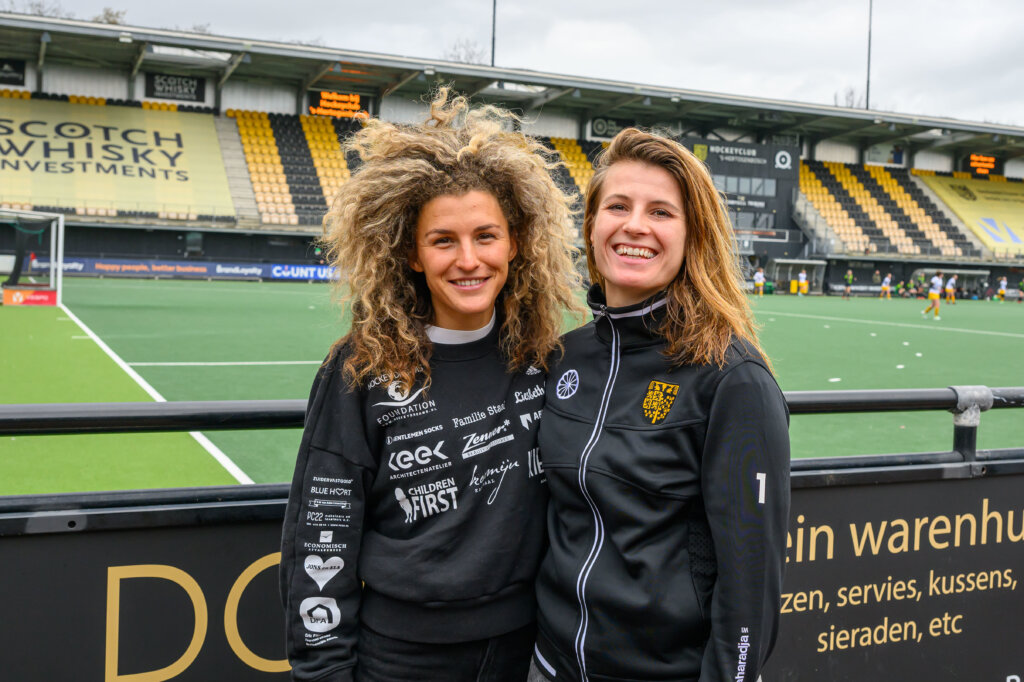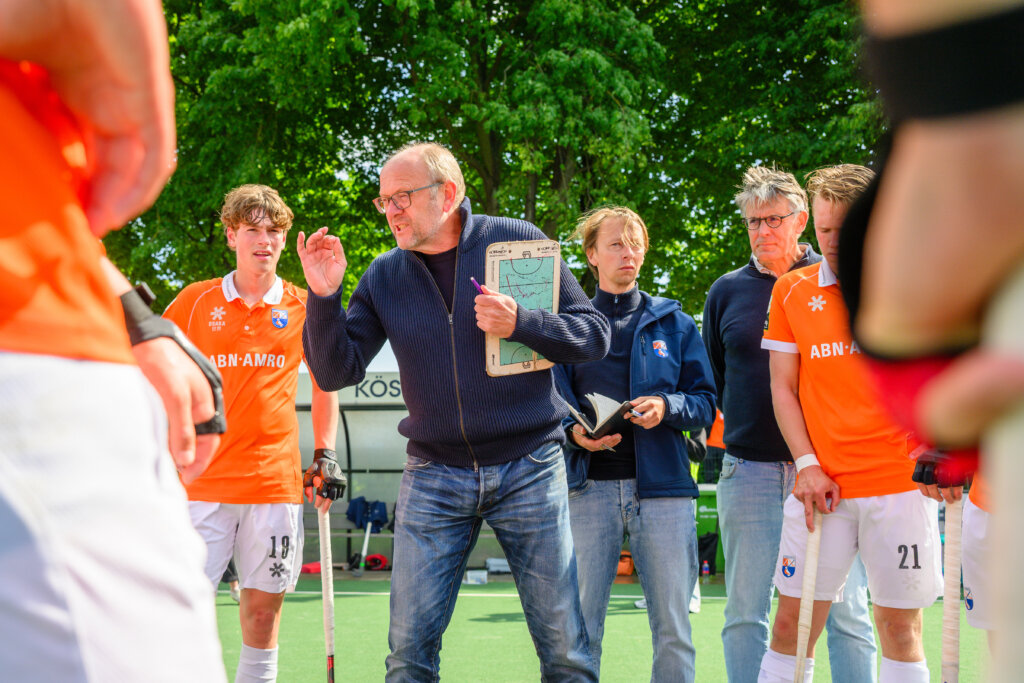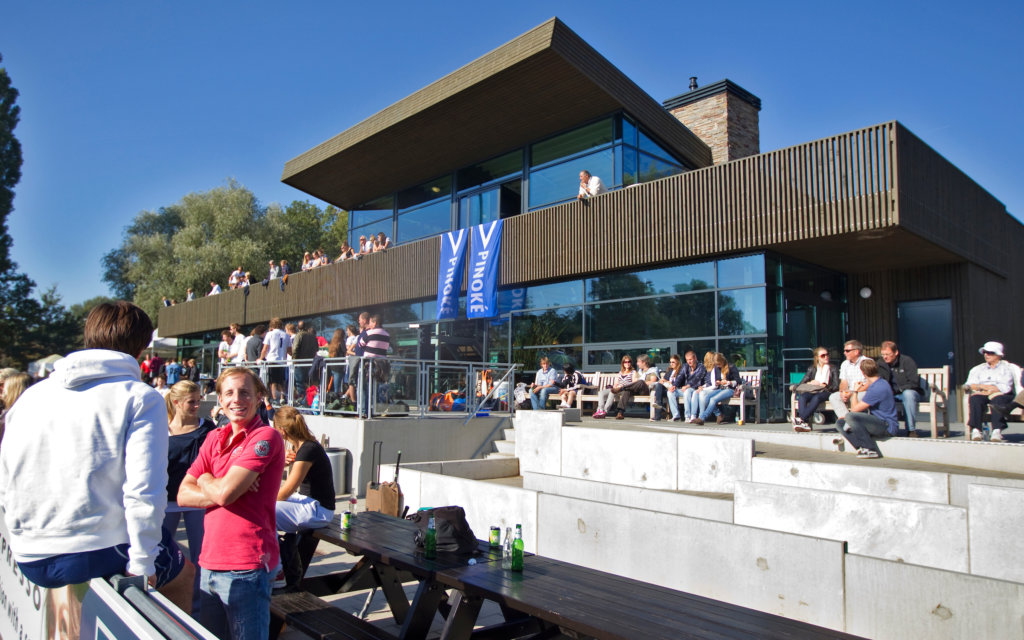In the “Salary Gap” series, we examine how skewed the ratios are in salaries in men’s and women’s field hockey. In this episode: ABN AMRO announced in 2023 that clubs they sponsor had to had to split their top hockey budget fifty-fifty between men’s and women’s teams within two years. Now the bank is changing that requirement, to a so-called uniform salary grading system.
Friday, March 31, 2023. An article appears on field hockey.nl with the headline: ‘ABN AMRO sticks to requirement: equal distribution of money, otherwise no sponsorship’. The message is clear: premier league clubs sponsored by the bank must split their top hockey budget fifty-fifty between men’s and women’s teams starting in 2025. If they fail to do so, ABN AMRO will not enter into a new sponsorship agreement with them. A decision that is causing a stir in the field hockey world.
That hard requirement was supposed to take effect from next season. But now, two years later, ABN AMRO chooses a different course after all. The bank is abandoning the earlier condition: equal sharing is no longer a requirement. Sander Bestevaar, Head of Partnerships, Events & Foundations, explains why that choice was made:
‘It is indeed true that we from ABN AMRO have expressed the ambition that the clubs divide their total budget of top field hockey fifty-fifty between the men and the women. In recent years, however, progressive insight has shown us that an equal division of the budget does not automatically lead to equal salaries for players. Factors such as higher spending on staff or other expenses can still cause inequality in salaries between men and women.

Maria Verschoor and Josine Koning spoke in favor of equal salaries in men’s and women’s field hockey. Photo: Bart Scheulderman
Change of course for ABN AMRO
In the interview two years ago, ABN AMRO stated that clubs they financially support should divide the money from all sponsors equally between men’s and women’s teams. The bank has since acknowledged that in practice that creates bottlenecks. This makes it difficult to fully enforce that division.
Bestevaar: “We realize that we do not always have full visibility and grip on the total budgets of individual clubs, for example due to the contribution of individual private club sponsors. There are sponsors and partners who necessarily want to invest an amount in the men and not go along with equality. We as a bank cannot exert much influence on that. We don’t want to sit in the board’s chair.’
There are sponsors and partners who necessarily want to invest an amount of money in the men and don’t want to go along with equality. We as a bank cannot exert much influence on that. Sander Bestevaar, Head of Partnerships, Events & Foundations at ABN AMRO
ABN AMRO’s goal remains the same: equal treatment and remuneration for field hockey players, regardless of gender. That’s why the bank is adjusting its strategy. Instead of focusing on equal distribution of the budget, ABN AMRO is introducing a uniform salary evaluation system in its contracts with clubs, similar to a collective bargaining agreement in the business world. ‘This system guarantees that a female player with the same position, experience and international matches will earn as much as her male counterpart,’ Bestevaar assures.
The premise is simple: players with similar resumes, regardless of gender, should be paid the same salary. So, a 28-year-old right back from Ladies 1 with ten internationals to her name should earn as much as a 28-year-old right back from Men 1 who has also played ten internationals.

Bloemendaal is one of the clubs sponsored by ABN AMRO that will be playing with both the men and women in the Tulip big league next season. Photo: Bart Scheulderman
Similar resume means similar salary, says ABN AMRO
The salary evaluation system is already effective immediately in the new contracts concluded from the summer of 2025. As such, it is a hard requirement for all clubs that ABN AMRO sponsors in the Tulip Premier League Men’s and Women’s and play at the highest level with both teams. ABN AMRO sponsors five clubs and seven teams in the Tulp Hoofdklasse: Bloemendaal (m/f), Oranje-Rood (m/f), SCHC (v), Kampong (v) and Schaerweijde (m).
By the way, the idea of a uniform salary evaluation system is not new in the field hockey world. Pinoké, which is not sponsored by ABN AMRO, set itself the goal two years ago of paying players with a similar resume the same. That goal was not achieved.
The goal of eliminating the difference by 2025 proved too ambitious. We have to be that honest,’ Marjolijn Meynen, board member of communications at Pinoké, said a few months ago. ‘We do want to reduce the gap, but that is clearly a long-term issue. We are taking small steps.’
ABN AMRO believes that the clubs they sponsor will be able to pay players with similar CVs the same. Bestevaar: ‘We are convinced that this approach paves the way for more transparency and justice.’

Pinoké, which is not sponsored by ABN AMRO, set itself the goal two years ago of paying players with comparable CVs the same. That goal was not achieved.
Our ambition has remained the same. But the path towards it – as often happens when you want to change a system – has been adjusted to achieve the results we have in mind. Sander Bestevaar, Head of Partnerships, Events & Foundations at ABN AMRO
So although ABN AMRO has adapted its approach, the bank remains unchanged in its commitment to equal treatment and reward in field hockey, Bestevaar stressed. ‘We work with clubs to make sure these principles are upheld. So our ambition has remained the same. But the path towards it – as often happens when you want to change a system – has been adjusted to achieve the results we envision.’
The approach is now leading to concrete results, both within the sponsored clubs and in the wider field hockey world, Bestevaar says. ‘The subject is now firmly on the agenda. Clubs we sponsor are required to split our sponsorship amount fifty-fifty between men’s and women’s teams when they play at the same level and play top field hockey. The conditions for women have improved: at many clubs women now receive the same budget for team trips and the same facilities. Prize money in the Euro Hockey League has also been divided equally. In addition, club boards are increasingly well balanced in terms of the male-female ratio.’
Bestevaar: ‘I hope it is clear how much we are doing to promote equality in field hockey – and that we are leading the way. Many positive steps have been taken in the past five years. We, along with our clubs, can be proud of that.


